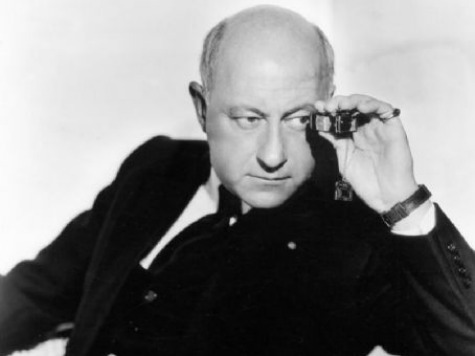As Hollywood goes through the annual ritual and frenzy of the Oscars, celebrating all it is and aspires to be through the prism of this year’s films, it’s worth noting that on this day 100 years ago the first feature film hit theaters.
Cecil B. DeMille’s The Squaw Man (1914), a 78-minute film produced by the Jesse L. Lasky Feature Play Company, eclipsed all the short films produced up to that time in Hollywood. Thomas Edison had launched the entertainment revolution, premiering the first “moving picture” at a Kinetoscope Parlor on Broadway on April 14, 1894.
Over the intervening 20 years, Hollywood was born. This major cultural development coincided not only with the Second Industrial Revolution but with huge immigration waves from Western and Eastern Europe and Eurasia in the wake of Russian pograms.
Jewish immigrants like Adolph Zukor (Hungary), Marcus Loew (Austria), Louis B. Mayer (Russia), William Fox (Hungary), the Warner Brothers (Poland), and Carl Laemmle (Germany) all came to America’s shores, ironically emigrating from towns within a 500-mile radius of each other.
Then there was Sam Goldfish (later Goldwyn), who left Warsaw, Poland on foot in 1898, without a penny in his pocket. He arrived in New York City via Canada in January 1899, soon landing work upstate as a glove salesman, rising to become Vice President of Sales at the Elite Glove Company.
At the turn of the century, 20-year-old Jesse Lasky, a second-generation American born in San Francisco, was performing on the vaudeville circuit, having previously worked at various odd jobs.
By about 1907 or so, Goldfish was back in New York City selling gloves. Then, one day, looking for new business opportunities, he walked into a theater on Herald Square packed with patrons, smelling of popcorn and sweat, and decided on the spot, ‘That’s what I’m getting into!’
The two would meet when Goldfish began courting, and ultimately married, Lasky’s sister Blanche. Lasky was by then a successful vaudeville producer. By 1913, Goldfish persuaded his reluctant brother-in-law, a year his junior, to partner with him. They were joined by Arthur Friend.
Lasky, who met DeMille while producing two Broadway musicals in 1911, Hello, Paris and A La Broadway–DeMille writing several vaudeville playlets for Lasky, which he acted in–persuaded him to join the trio.
Restless DeMille was headed to Mexico as a war correspondent. Instead, he visited the Edison Studios in the Bronx and after observing how films were made, realized, if that was all there was to it, he’d be at the top before long because it was a straightforward process.
The express purpose of their company was to make feature-length motion pictures–a whole new concept. With this goal in mind, DeMille soon headed west to make their first, The Squaw Man, based on the play by Edwin Milton Royle, which, since 1905, had enjoyed a successful Broadway run.
They bought the rights for $4,000 and hired Dustin Farnum, after whom Dustin Hoffman was named, for the lead.
Searching for wider expanses, DeMille rejected Flag Staff, Arizona putatively because it was too hilly. But, as Ewing Miles “Lucky” Brown, whose relatives owned the studio that would become Paramount, said, the day they arrived it was pouring rain, rare for Arizona, where cloud bursts hit about twice a year. If not for this uncanny timing, “Hollywood,” DeMille told Brown, “would have been in Arizona!”
While it makes a good story it’s likely only partly true. The exodus to Hollywood, with its ideal filmmaking terrain, low labor costs, warm climate, and freedom from trust enforcers, had already started.
Traveling all the way to Los Angeles at the suggestion of the train’s porter, who had seen this steady migration West, DeMille rented a barn on Vine Street, just north of Sunset Boulevard, the Lasky film company’s first studio. He began filming The Squaw Man on December 29, 1913.
For outdoor filming, he was his own location scout and found beautiful settings: San Pedro was the ideal location for the harbor scenes; the San Fernando Valley just the spot for the western saloon; Keen Camp in Idllwild, California perfect for cattle grazing scenes in the open range; and, Mount Palomar for snow scenes.
The Squaw Man, the first of many westerns to come, was released on February 15, 1914, to the delight of audiences. One hundred years later, Hollywood would be nothing but for these pioneers.
Mary Claire Kendall is currently writing a book about legends of Hollywood, focused on stories of recovery, for publication in 2015. She will be on the red carpet at the Oscars interviewing the stars.

COMMENTS
Please let us know if you're having issues with commenting.